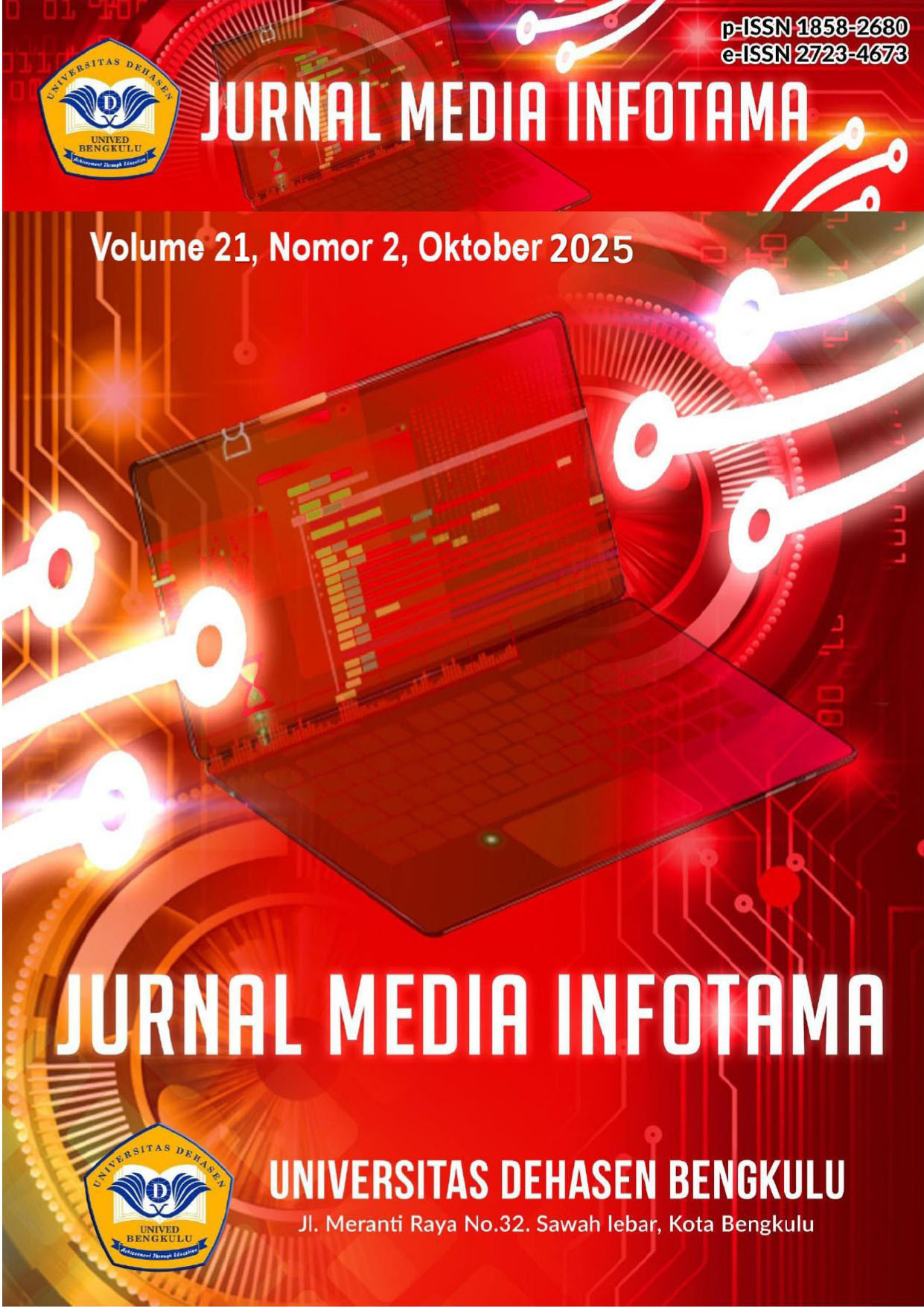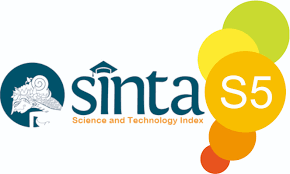Analisis Usability Pada Aplikasi Shopee Menggunakan Metode SUS Dan UTAUT2 (Studi Kasus: Mahasiswa Universitas Hasanuddin)
Abstract
Latar Belakang. Shopee merupakan platform e-commerce terkemuka di Indonesia dengan jumlah pengguna aktif terbanyak. Namun, agar tetap kompetitif, aplikasi Shopee masih memerlukan berbagai pengoptimalan dalam aspek usability. Tujuan. Penelitian ini bertujuan menganalisis persepsi pengguna terhadap usability Shopee dengan metode SUS, serta mengidentifikasi faktor yang mempengaruhi kepuasan pengguna melalui UTAUT2. Metode. Penelitian ini menggunakan metode System Usability Scale (SUS) dan Unified Theory of Acceptance and Use of Technology 2 (UTAUT2). Penelitian ini melibatkan 190 responden dari mahasiswa Universitas Hasanuddin yang berasal dari 16 fakultas. Hasil. Hasil evaluasi menggunakan metode System Usability Scale menunjukkan skor 68,58, yang termasuk dalam kategori Marginal (High) dengan grade scale D dan berada dalam rentang GOOD. Analisis menggunakan model UTAUT2 menunjukkan bahwa variabel dengan pengaruh terbesar adalah Habit (87,47%), diikuti oleh Effort Expectancy (85,16%) dan Behavior Intention (82,74%). Sementara itu, variabel dengan pengaruh terendah adalah Social Influence (73,26%), diikuti oleh Facilitating Condition (78,32%) dan Price Value (79,05%). Kesimpulan. Penelitian ini menunjukkan bahwa pengguna menerima Shopee sebagai aplikasi yang bermanfaat, memberikan kemudahan, serta pengalaman yang menyenangkan dalam penggunaannya.
Downloads
References
Alfiatunnisa, E., Khairunnisa, H. Z., Hayati, S., & Maulida, V. L. (2022). Uji Validitas dan Reliabilitas Terhadap Kemandirian Siswa Sekolah Dasar Kelas 1. Jurnal Hurriah: Jurnal Evaluasi Pendidikan dan Penelitian, 3(2), 39-36. doi:https://doi.org/10.56806/jh.v3i2.81
Bungin, B. (2017). Metodologi Penelitian Kualitatif: Aktualisasi Metodologis ke Arah Ragam Varian Kontemporer. PT RajaGrafindo Persada.
Hair Jr., J., Black, W., Babin, B., & Anderson, R. (2019). Multivariate Data Analysis (8th Edition). Boston, MA: Cengage Learning.
Hair Jr, J. F., Hult, G. T., Ringle, C. M., & Sarstedt, M. (2017). A Primer on Partial Least Squares Structural Equation Modeling (PLS-SEM).
Idris, I. S., Mustofa, Y. A., & Salihi, I. A. (2023). Analisis Sentimen Terhadap Penggunaan Aplikasi Shopee Mengunakan Algoritma Support Vector Machine (SVM). Jambura Journal of Electrical and Electronics Engineering, 5(1), 32-35. doi:https://doi.org/10.37905/jjeee.v5i1.16830
Larasati, I. S. (2023). Analisis Hubungan Tingkat Kepuasan Pengguna Dan Tingkat Kematangan Aplikasi Menggunakan Metode UTAUT2 Dan COBIT5.
Manik, V. (2020). Evaluasi Usability pada Aplikasi Mobile Acc.one Menggunakan System Usability Scale (SUS) dan Usability Testing.
Martono, N. (2015). Metode Penelitian Kuantitatif. PT Rajagrafindo Persada.
Ramadhan, G. (2023). Evaluasi Usability pada Aplikasi Talent Menggunakan System Usabilty Scale (SUS) di Astra Credit Companies Jambi. Universitas Jambi, 11-15.
Sugiyono. (2014). Metode Penelitian Pendidikan Pendekatan Kuantitatif dan R&D. Bandung: Alfabeta.
Syahputra, B., & Fitriani, W. (2022). Analisis Usability Testing Pada Marketplace (Studi Kasus: Maupesan.Id). Jurnal Ilmiah Indonesia, 7. doi:https://doi.org/10.36418/syntax-literate.v7i11.9908
Tumanggor, S., Hadi, P., & Sembiring, R. (2022). Pembelian Impulsif pada E-commerce Shopee (Studi pada Konsumen Shopee di Jakarta Selatan). Journal of Business and Banking, 11(2), 251-270. doi:https://doi.org/10.14414/jbb.v11i2.2733
Utami, Y., Rasmanna, P. M., & Khairunnisa. (2023). Uji Validitas dan Uji Reliabilitas Instrument Penilaian Kinerja Dosen. SAINTEK (Jurnal Sains dan Teknologi), 4(2), 20-24. doi:https://doi.org/10.55338/saintek.v4i2.730
Venkatesh, V., Thong, J. Y., & Xu, X. (2012). Consumer Acceptance And Use Of Information Technology: Extending The Unified Theory Of Acceptance And Use Of Technology. Forthcoming in MIS Quarterly, 36(1), 157-178. doi:https://doi.org/10.2307/41410412
Zahra, F., Indrawati, H., & Rizka, M. (2024). Pengaruh Kualitas Website terhadap Kepuasan Pelanggan E-Commerce Shopee. Jurnal Ilmiah Ilmu Pendidikan, 7(12), 13497-13502. doi:http://dx.doi.org/10.54371/jiip.v7i12.6389
Copyright (c) 2025 1Nur Aisyah S*, 2Eliyah Acantha Manapa Sampetoding, 3Jeffry Kusuma, 4Jeriko Gormantara

This work is licensed under a Creative Commons Attribution-ShareAlike 4.0 International License.
An author who publishes in Jurnal Media Infotama agrees to the following terms:The author holds the copyright and grants the journal the right of first publication of the work simultaneously licensed under the Creative Commons Attribution-Share Alike 4.0 License which allows others to share the work with acknowledgment of the work's authorship and initial publication in this journal.Submission of a manuscript implies that the submitted work has not been previously published (except as part of a thesis or report, or abstract); that it is not being considered for publication elsewhere; that its publication has been approved by all co-authors. If and when a manuscript is accepted for publication, the author retains the copyright and retains the publishing rights without limitation.
For new inventions, authors are advised to administer the patent before publication. The license type is CC-BY-SA 4.0.
MEDIA INFORMATION REVIEW: Journal of the Faculty of Computer Science is licensed under a Creative Commons Attribution-ShareAlike 4.0 International License.You are free to:Share
— copy and redistribute material in any medium or formatAdapt
— remix, modify and develop materialfor any purpose, even commercial.
The licensor cannot revoke this freedom as long as you follow the license terms












.png)


